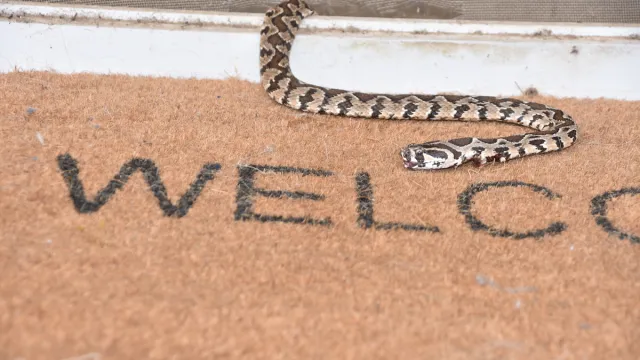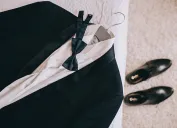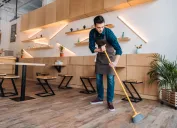8 Surprising Places You're Letting Snakes Into Your Home
Experts warn there are a few spots in your house you may want to double check.
Coming across a snake in nature can be a startling experience, especially in your own yard. But it's an entirely different type of encounter when you happen to find one inside your house. Unfortunately, crossing paths with a snake in your home may be more likely than you think, as there are several ways these crafty critters can find their way in. Read on to hear from pest experts about all the surprising places you may be letting snakes into your home—and how to prevent it.
READ THIS NEXT: 8 Things in Your Yard That Are Attracting Snakes to Your Home.
1
Dryer lines or AC vents
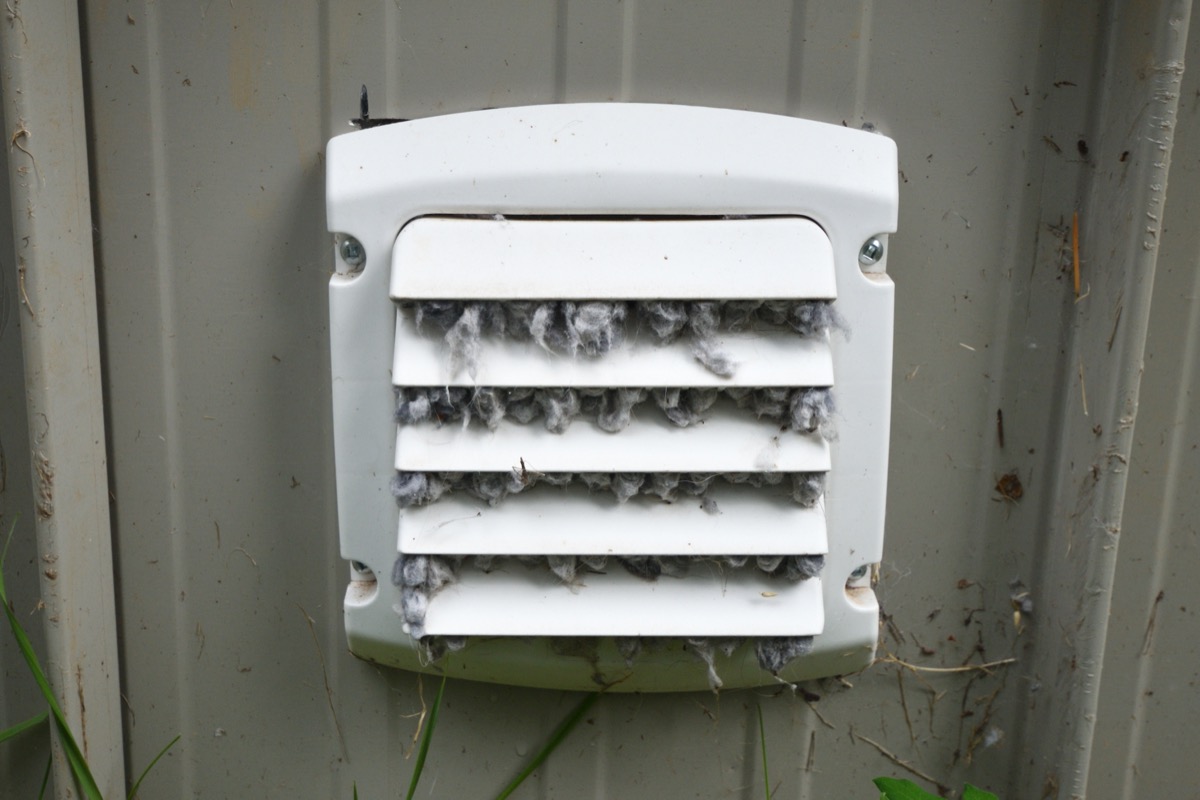
By their very design, vents work by allowing the passage of air into or out of your home to keep things cool or warm as needed. But experts warn that animals can sometimes use these typically one-way corridors to work their way indoors—including snakes.
Appliances such as dryers and air conditioners can provide an accessible entryway into houses, especially if they're left open or their guard mechanism isn't up to snuff.
"They can get through pretty much anything that is general ease of access," Patrick O'Briant from Tennessee-based pest control services company Critter Wranglers told NBC-affiliate WBIR. "Everyone knows snakes don't have hands. If they can push it, they'll push it to get into a place," he said, adding that he's found the reptiles in customers' dryers after they've chased a rodent in through a vent.
If you're concerned, do a seasonal inspection of your home's venting and climate control inlets and outlets to ensure they're adequately covered.
2
Gaps around plumbing

In most homes, exterior walls are made of flush, solid concrete at the base and sturdy drywall and wood above it. But the points where external hardware such as gas and plumbing lines enter the house can provide an unintentional entry point for pests.
"If your home has gas lines coming into your home, these pipes have to travel from outside your home through your foundation or exterior wall," David Floyd, owner of ThePestInformer, tells Best Life. "This can sometimes mean there are small gaps between the pipe and the foundation of your home," which can leave enough space for snakes to make their way indoors.
READ THIS NEXT: 8 Plants That Will Keep Snakes Out of Your Yard, According to Pest Experts.
3
Toilets
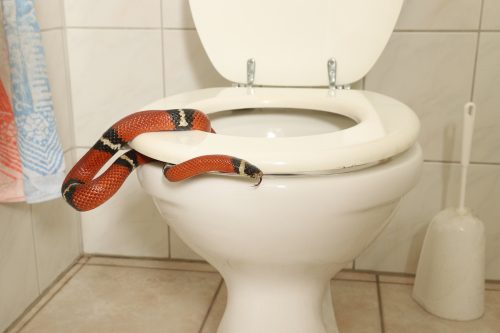
We've all heard the urban legend about the unlucky homeowner who goes to use the toilet in the middle of the night only to find a snake awaiting them when they lift the lid. While it can be easy to write such events off as hearsay, experts, unfortunately, point out that it's not an entirely implausible scenario.
First, it's important to understand why the toilet is a desirable hiding spot for a snake. Georgina Ushi Phillips, DVM, advising veterinarian and writer for The Reptile Room, previously explained to Best Life that the reptiles are ectothermic, meaning "they rely on the environment around them to control their body temperature."
"So, during a hot summer day, the open ventilation pipe or cracks in your home's foundation make a great place to cool off," she said. "Eventually, these snakes can make their way into the toilet, and the sewer ventilation pipe (often on the roof) can often let them come up the toilet."
To avoid this nightmare scenario, seal off any cracks around the base of your toilet and repair any broken sewer or water pipes.
4
Showers
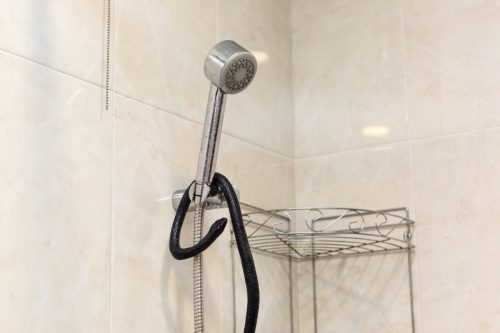
Like your toilet, showers can also be a place where snakes enter via other means. In this case, it's usually through a ventilation pipe, which is typically found on the roof.
Therefore, since snakes can slither quite high, one of the main ways to guard against this is by trimming any tree branches close to your roof line, as Sholom Rosenbloom, the owner of Baltimore-based Rosenbloom Pest Control, previously told Best Life.
Rosenbloom said you can also add wire mesh and a vent hood to your pipes. "This will stop any animal from getting inside these pipes. And if they can't get in the exhaust pipes, they have no way to get into your shower drain pipe or toilet."
READ THIS NEXT: 9 Scents That Repel Snakes, According to Experts.
5
Cracks in your foundation
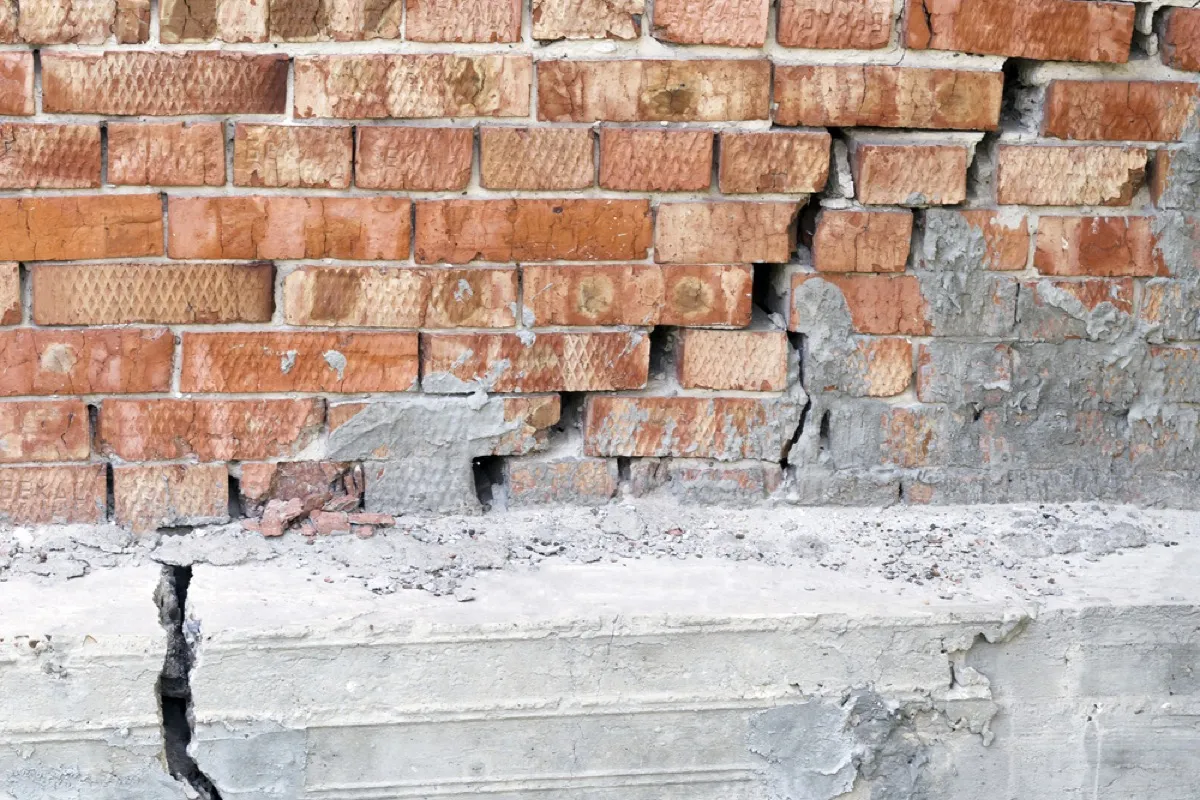
Certain wear-and-tear repairs on your home such as leaky roofs can be impossible to miss and prioritize fixing. But if you're looking to keep unwanted visitors out, you should also be focusing at least some of your attention downwards on your foundation.
"Snakes can get into your home through a gap the size of a pencil," says Nancy Troyano, PhD, a board-certified entomologist with Ehrlich Pest Control. "It's important to close up any holes, cracks, or crevices in the home, especially near the crawl space. Drainage areas are a perfect entry point for snakes."
6
Gaps around doors and windows
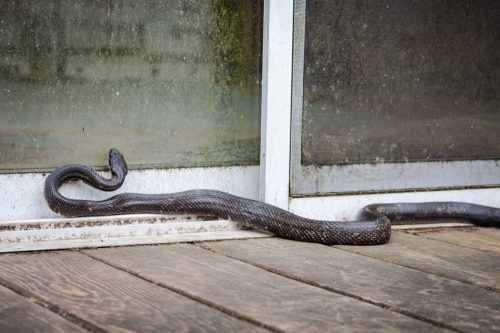
The whole point of a door or window is to limit what comes into your home. But experts warn that seemingly tiny gaps in your entryway can provide all the space a snake needs to make its way inside.
Paul Osborne, owner of All Creatures Wildlife Services in Tennessee, told WBIR that this is especially true of garage doors, which can sometimes fail to seal correctly and allow the cold-blooded creatures to enter in search of warmth or food.
To avoid welcoming in any snakes, install a door sweep or caulk any gaps. And it should go without saying that leaving your doors wide open can also act as an open invitation for anyone to slither in, so make sure to keep garage and screen doors closed tightly.
For more home and pest advice delivered straight to your inbox, sign up for our daily newsletter.
7
Basement access points
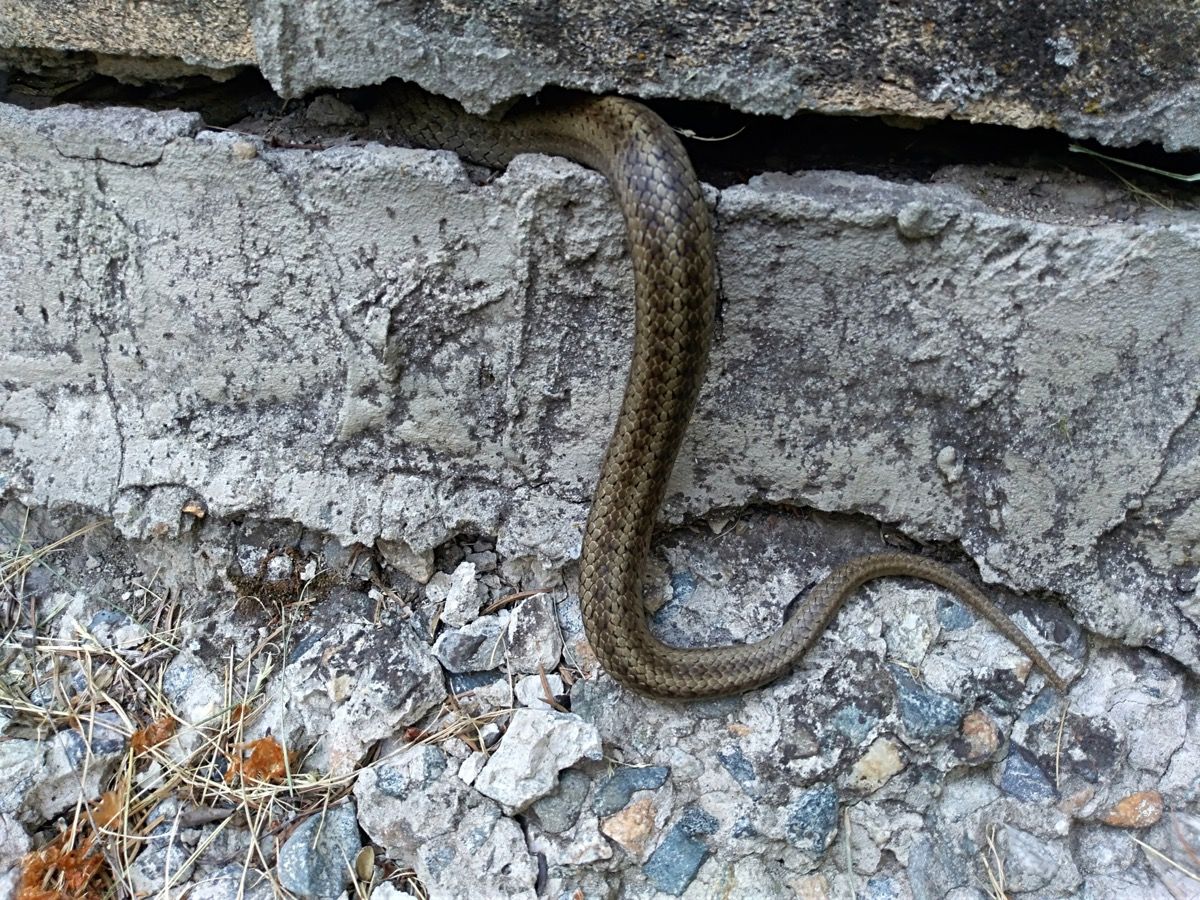
Your home's subterranean level may provide that extra storage space you need, but it could also be granting entry to snakes who find their way indoors through gaps, cracks, or holes.
"In order to prevent visits from our resident reptiles, you'll need to seal up that basement," Andrew Christopher, owner of Western Mass Wildlife Removal, previously told Best Life. "Common entry points are leaky or open windows, rotted sills, and drafty bulkheads."
8
Shoes
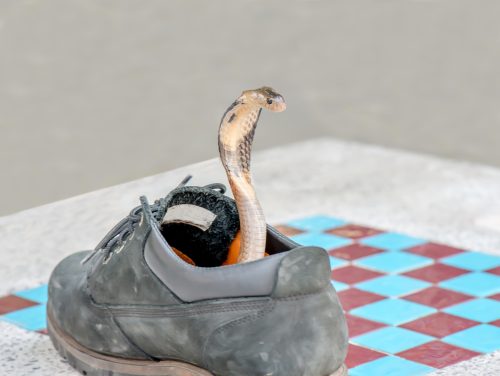
We know this sounds odd, but it's not completely unheard of for snakes to slither into a pair of shoes that you've left outside the house on your porch or deck. If you then grab these shoes to bring them in, you could be in for a dangerous surprise.
In fact, this past spring, a man in Georgia found a pair of venomous copperhead snakes "hiding in and around pairs of shoes stored by the garage entry door," Best Life previously reported.
And last year, a viral TikTok video showed a snake relocation expert in Southern California removing a hidden, venomous rattlesnake from a client's shoe that was outside his front door.
